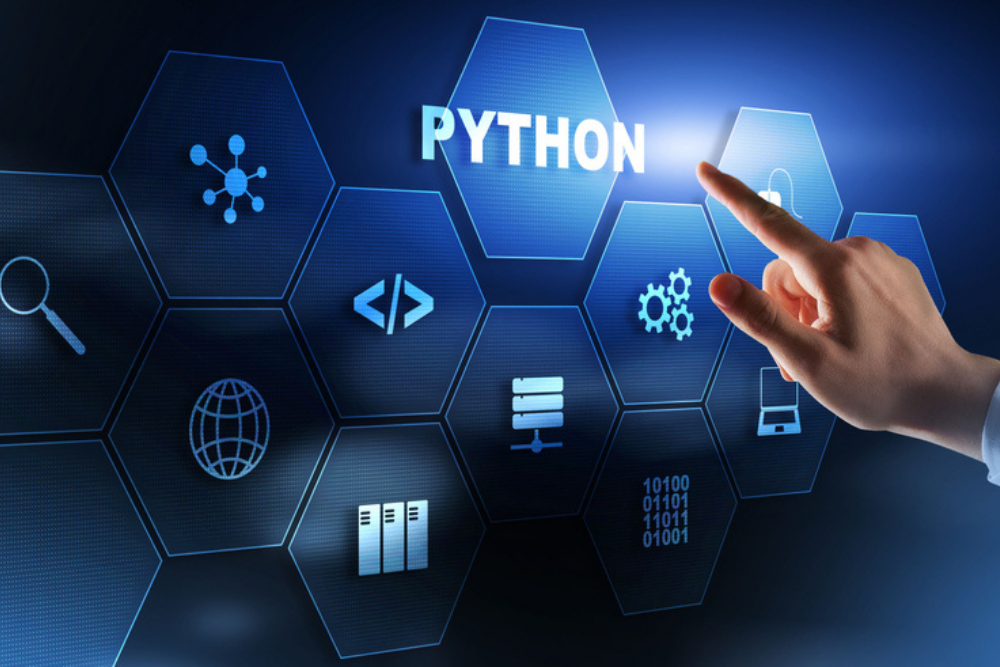Introduction:
Python is a high-level open-source programming language that functions as a general-purpose language. What sets Python apart from other programming languages ​​is that it is easy to use, can be taught to beginners, can be integrated into any application, and can run on all current operating systems. The operating systems include Mac, Windows, and Linux. It is also one of the most powerful languages ​​that a programmer can use and is as close as three to five times faster to code than JavaScript and C ++, respectively.
Origin of Python:
Python was introduced in 1991 by Guido Van Rossum at the National Institute for Research in Mathematics and Computer Science in the Netherlands.
Development started in the 1980s and the language was introduced in 1991. Van Rossum had previously worked on the ABC language at the Centrum Wiskunde & Informatica (CWI) in the Netherlands.
The ABC language was able to handle exceptions and communicate with the Amoeba operating system. Including all the characteristics of the ABC language, such as the simplicity that he liked. In addition, he improved other features he disliked and added some interesting ones.
Features of Python
1. Python is a free and an open-source language:
Python can be easily downloaded from the official website and installed for free on any major operating system. It has an open-source license (OSL) that is also valid for commercial purposes.
2. 2. Python is fast, flexible, and portable:
Python is so flexible that a developer who writes an instruction in Python can easily understand it from another developer who can even modify those instructions as needed. Likewise, code developed on the Windows operating system can be executed and improvised on another operating system. Since Python is an interpreted language, the code is checked at runtime and executed on the system, followed by others.
1. 3. Python is easy to learn, code, and implement:
Although Python is suitable for beginners, it is considered an advanced coding language, with most instructions very similar to the English language. It helps a person skilled in the art to know software other than Python, as it is similar to object-oriented structures with other software.
2. 4. Python also supports scientific libraries:
With the help of the advanced functions learned in the fields of data science and Python training, processing large amounts of data and performing analyzes at the same time has become very easy and fast. Python support for academic libraries is rapidly improving in terms of computing. Python helps to exclude blocks formed when modeling statistical data using Numpy, Scipy, Pandas, and Matplotlib.
3. 5. Python supports several areas:
The detailed list of packages supported by the Python language can be found in the Python package index. To include modules such as GUI, test, automation, database, network, web development, image processing, word processing, etc., Python consists of several standard libraries that perform the following function:
– Machine learning – ML offers the flexibility that AI machines can use to improvise with the TensorFlow and Keras libraries.
– Web Development – Frameworks like Django, Pylons, and Flask, which are encoded in Python, are considered more stable for the development of websites.
– Hadoop – Using Hadoop, Python uses the Pydoop library to render support for processing large amounts of data.
– Graphics – Python’s Tkinter library makes it easy to write, and run GUI applications.
– Image processing – PIL – The Python image processing library supports image files in a variety of formats
– Automated testing – automated testing tools, such as Selenium, and Splinter, have an application programming interface that can be run in Python. A developer can also use Pytest to test across platforms, and cross browsers.
4. 6. Python follows procedural and OOP coding standards:
Pythons come with a mix of procedural and OOP coding models that allow users to code procedural and object-oriented programming. In Python, an encoder writes long lines of the program in a procedural pattern with a mixture of code and data to be fed. The OOP model involves programming with classes, objects, and methods that pave the way for functional behaviors, such as inheritance, abstraction, and polymorphism.
– The structural unit of an object, which consists of grouped data and whose reusable functions are called a class and this class function process is called a method.
– The object’s objective is to create an instance of a class at runtime or when the code is operational.
– A process used in the classroom to hide complex procedures and simplify their appearance is defined as an abstraction.
– The subclass, which inherits and uses the functions and attributes of the primary or parent class, uses a phenomenon called inheritance to reuse the code.
– When inheritance is used, polymorphism is used, which allows the inherited class to perform the same functions differently than the parent class.
As you have had enough introductory information about python now, for more information and queries you should visit here at Python classes in Pune.
